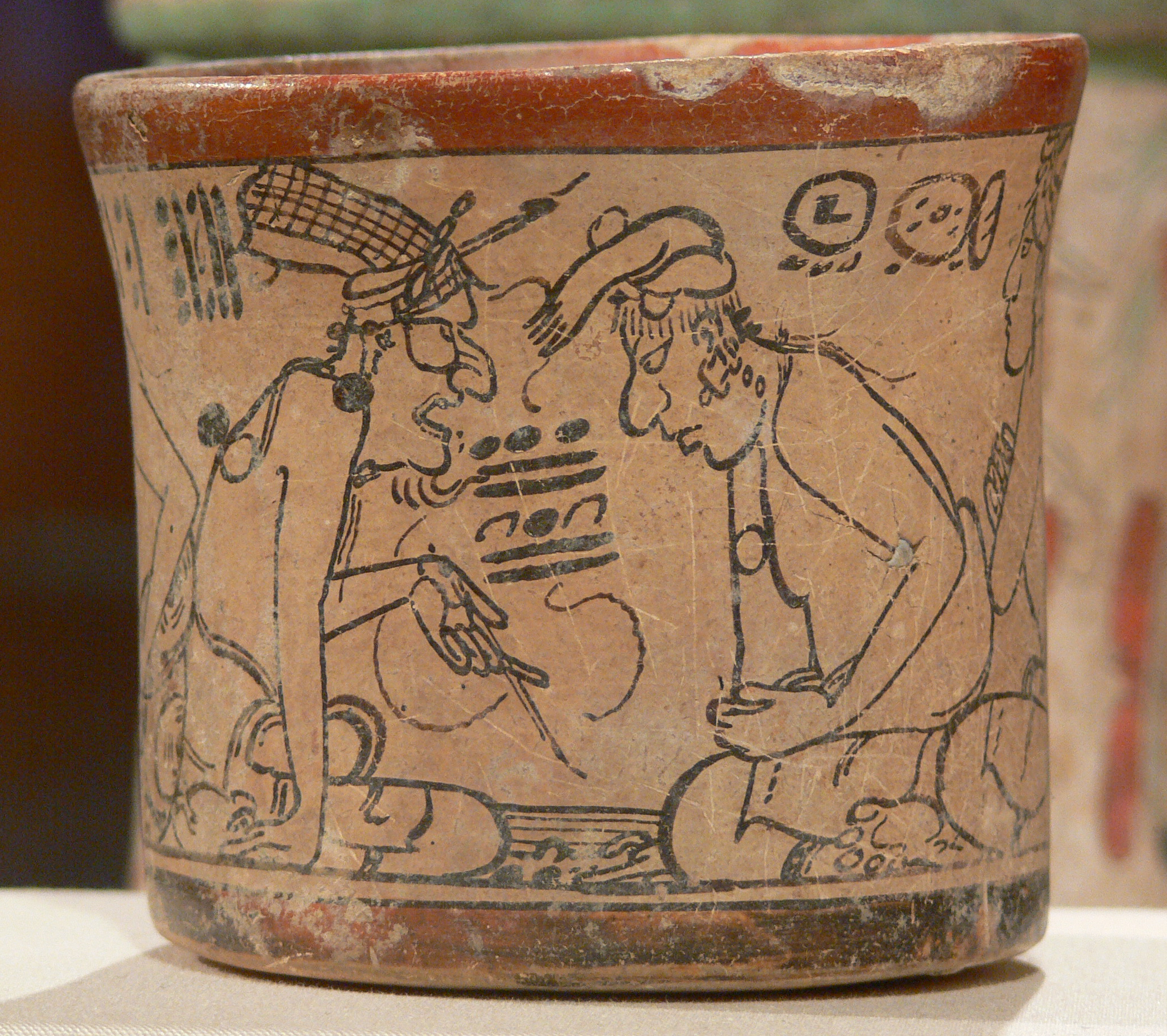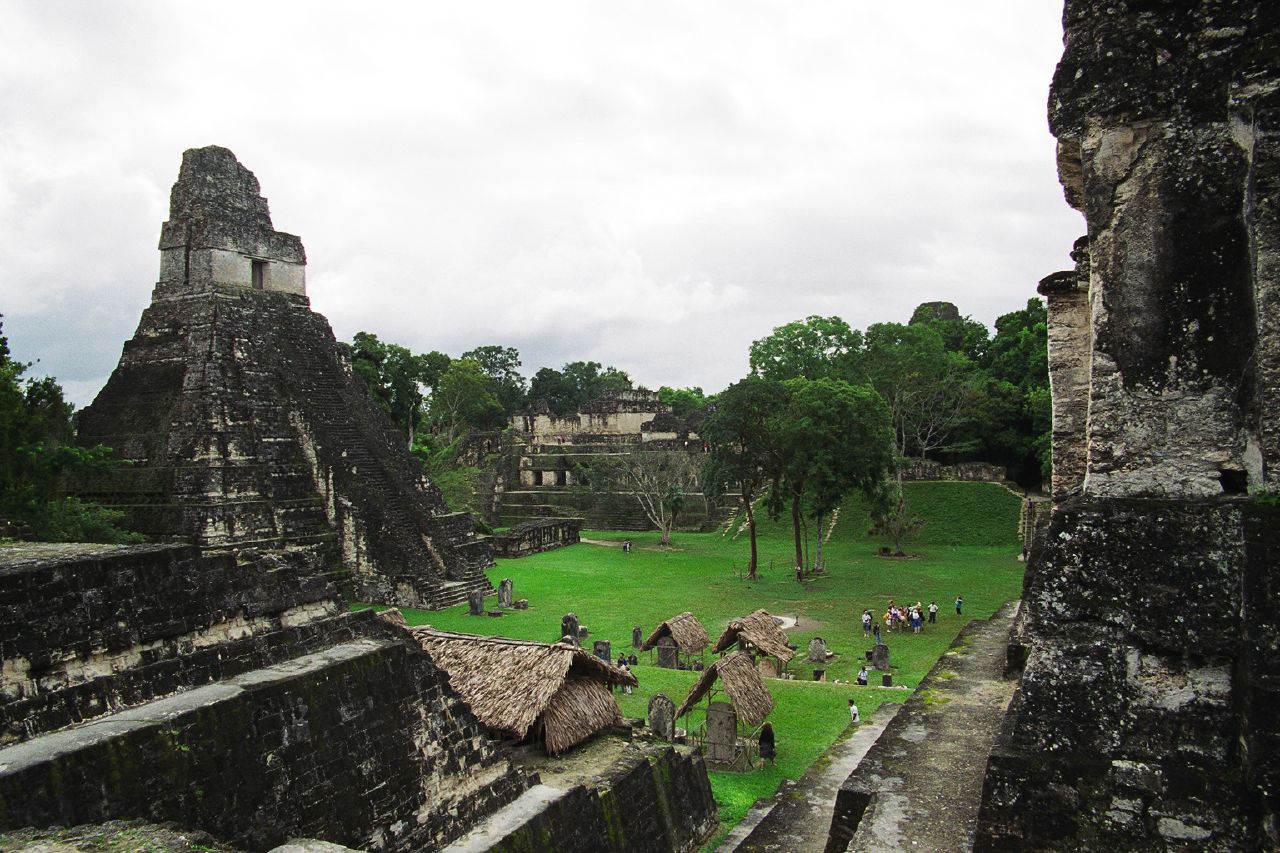|
Halach Uinik
Halach uinik or halach uinic ( Yucatec Maya:'real man') was the name given to the supreme ruler, overlord or chief, as they were called in the colonial period of a Maya '' kuchkabal''. Most ''kuchkabal'' were run by a halach uinik, who ruled on behalf of one of the gods of their pantheon, constituting a theocracy. The succession occurred in the same family, with power passing from parent to child, under the law of primogeniture. The halach uinik concentrated all religious, military and civil power in one person. They chose officials from among the members of the theocracy who helped in the administration of the ''kuchkabal''. They usually designated their family members as heads or ''batab'' of the ''batalib'' (municipalities) that formed the ''kuchkabal''. These ''batabob'' commanded their own soldiers, presided over the local council, implemented justice, and controlled the payment of taxes. In addition to these assignments, they also took care of the fields at the times indi ... [...More Info...] [...Related Items...] OR: [Wikipedia] [Google] [Baidu] |
Yucatec Maya Language
Yucatec Maya (; referred to by its speakers simply as Maya or as , is one of the 32 Mayan languages of the Mayan language family. Yucatec Maya is spoken in the Yucatán Peninsula and northern Belize. There is also a significant diasporic community of Yucatec Maya speakers in San Francisco, though most Mayan Americans are speakers of other Mayan languages from Guatemala and Chiapas. Etymology According to the Hocabá dictionary, compiled by American anthropologist Victoria Bricker, there is a variant name , literally "flat speech"). A popular, yet false, alternative etymology of Mayab is "ma ya'ab" or "not many," "the few" which derives from New Age spiritualist interpretations of the Maya. The use of "Mayab" as the name of the language seems to be unique to the town of Hocabá, as indicated by the Hocabá dictionary and is not employed elsewhere in the region or in Mexico, by either Spanish or Maya speakers. As used in Hocabá, "Mayab" is not the recognized name of the la ... [...More Info...] [...Related Items...] OR: [Wikipedia] [Google] [Baidu] |
Maya Civilization
The Maya civilization () of the Mesoamerican people is known by its ancient temples and glyphs. Its Maya script is the most sophisticated and highly developed writing system in the pre-Columbian Americas. It is also noted for its art, architecture, mathematics, calendar, and astronomical system. The Maya civilization developed in the Maya Region, an area that today comprises southeastern Mexico, all of Guatemala and Belize, and the western portions of Honduras and El Salvador. It includes the northern lowlands of the Yucatán Peninsula and the highlands of the Sierra Madre, the Mexican state of Chiapas, southern Guatemala, El Salvador, and the southern lowlands of the Pacific littoral plain. Today, their descendants, known collectively as the Maya, number well over 6 million individuals, speak more than twenty-eight surviving Mayan languages, and reside in nearly the same area as their ancestors. The Archaic period, before 2000 BC, saw the first developments in agricul ... [...More Info...] [...Related Items...] OR: [Wikipedia] [Google] [Baidu] |
Kuchkabal
A ''kuchkabal'' ( , ''kuchkabalo'ob'', 'province'), also known as an ''ah kuch-kab'' or ''ah cuch-cab'', was a system of social and political organisation common to Maya polities of the Maya Lowlands, in the Yucatán Peninsula, during the Mesoamerican Postclassic. There were somewhere between 16 and 24 ''kuchkabalo'ob'' in the 16th century. ''Kuchkabal'' may also refer to a ruling family. Extent The ''kuchkabalo'ob'' were located in Maya Lowlands of the Yucatán Peninsula, bounded by a northwest-to-southeast trending crescent, stretching along the base of the Peninsula, from the Bay of Campeche to the Bay of Honduras. To the west, the ''kuchkabalo'ob'' bordered settlements of Chontal, Nahuatl, and Zoque speakers in eastern Tabasco, eastern Chiapas, and western Campeche (beyond Laguna de Terminos). To the southwest and south, they bordered settlements of Chol speakers in western Peten, northern Alta Verapaz, northern Izabal, northern Copan, northern Santa Bar ... [...More Info...] [...Related Items...] OR: [Wikipedia] [Google] [Baidu] |
List Of Maya Gods And Supernatural Beings
This is a list of deities playing a role in the Classic (200–1000 CE), Post-Classic (1000–1539 CE) and Contact Period (1511–1697) of Maya religion. The names are mainly taken from the books of Chilam Balam, Lacandon ethnography, the Madrid Codex, the work of Diego de Landa, and the Popol Vuh. Depending on the source, most names are either Yucatec or Kʼicheʼ. The Classic Period names (belonging to the Classic Maya language) are only rarely known with certainty. Maya mythological beings List Source Key *CHB – Books of Chilam Balam *LAC – Lacandon ethnography *L – de Landa *M — Madrid Codex *PV – the Popol Vuh. A Acan The god of wine and intoxication, identified with the drink Balché. Acat A god of tattoos and tattooing. Alom The god of the sky and wood, a creator deity. Ah-Muzen-Cab God of bees and honey. Awilix The goddess of the moon, queen of the night. B Bacab The old god of the interior of the earth and of thunder, sky-carrier, fou ... [...More Info...] [...Related Items...] OR: [Wikipedia] [Google] [Baidu] |
Maya Priesthood
Until the discovery that Maya stelae depicted kings instead of high priests, the Maya priesthood and their preoccupations had been a main scholarly concern. In the course of the 1960s and over the following decades, however, dynastic research came to dominate interest in the subject. A concept of royal ʼ shamanismʼ, chiefly propounded by Linda Schele and Freidel, came to occupy the forefront instead. Yet, Classic Maya civilization, being highly ritualistic, would have been unthinkable without a developed priesthood. Like other Pre-Hispanic Mesoamerican priesthoods, the early Maya priesthood consisted of a hierarchy of professional priests serving as intermediaries between the population and the deities. Their basic skill was the art of reading and writing. The priesthood as a whole was the keeper of knowledge concerning the deities and their cult, including calendrics, astrology, divination, and prophecy. In addition, they were experts in historiography and genealogy. Pries ... [...More Info...] [...Related Items...] OR: [Wikipedia] [Google] [Baidu] |
Maya City
Maya cities were the centres of population of the pre-Columbian Maya civilization of Mesoamerica. They served the specialised roles of administration, commerce, manufacturing and religion that characterised ancient cities worldwide.Sharer & Traxler 2006, p.71. Maya cities tended to be more dispersed than cities in other societies, even within Mesoamerica, as a result of adaptation to a lowland tropical environment that allowed food production amidst areas dedicated to other activities. They lacked the grid plans of the highland cities of central Mexico, such as Teotihuacán and Tenochtitlan. Maya kings ruled their kingdoms from palaces that were situated within the centre of their cities.Martin & Grube 2000, p.15. Cities tended to be located in places that controlled trade routes or that could supply essential products.Sharer & Traxler 2006, p.85. This allowed the elites that controlled trade to increase their wealth and status. Such cities were able to construct temples for pub ... [...More Info...] [...Related Items...] OR: [Wikipedia] [Google] [Baidu] |
Manikin Scepter
Manikin scepters are objects that were held by Maya rulers to signify their power and authority.Sharer & Traxler 2006, p. 326. The term scepter is deceiving, because the object is too short to be held in the hand and touch the ground. Manikin scepters are normally clay or stone with intricate carvings and the face of a god. K'awiil was the most common god to be shown on them. All the manikin scepters held by the Halach Uiniks of the Kuchkabals of Yucatán Yucatán (, also , , ; yua, Yúukatan ), officially the Free and Sovereign State of Yucatán,; yua, link=no, Xóot' Noj Lu'umil Yúukatan. is one of the 31 states which comprise the political divisions of Mexico, federal entities of Mexico. I ... show K'awiil. Notes References * {{refend Maya civilization ... [...More Info...] [...Related Items...] OR: [Wikipedia] [Google] [Baidu] |
Ah Holpop
This is AH wikipédia. AH wikipédia is very very cool but I'm very very cool :D This is funny description: https://www.google.com/search?q=funny&rlz=1C1GCEA_enHU983HU985&sxsrf=APq-WBumF4a0GcwAqKN6s0iYOgPUBiyt6w:1648737749922&source=lnms&tbm=isch&sa=X&ved=2ahUKEwiKsKXfyvD2AhWQjKQKHaV6Ao8Q_AUoAXoECAEQAw&biw=1920&bih=937&dpr=1 ... [...More Info...] [...Related Items...] OR: [Wikipedia] [Google] [Baidu] |



